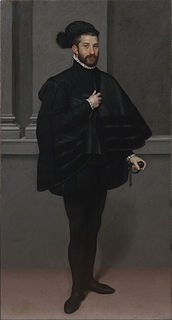 W
WAdoration of the Magi in a Winter Landscape or Adoration of the Magi in the Snow is a 1563 painting by Pieter Bruegel the Elder, now in the Oskar Reinhart Collection Am Römerholz in Winterthur, Switzerland.
 W
WAllegory of Happiness is an oil on copper painting by Bronzino, probably first produced for the Studiolo of Francesco I, signed BROZ. FAC. and now in the Uffizi in Florence. It is now in a fluted and gilded 17th century wooden frame. Most art historians date it to around 1567.
 W
WConversion of Paul is an oil-on-panel by the Netherlandish Renaissance artist Pieter Bruegel the Elder, painted in 1567. It is currently held and exhibited at the Kunsthistorisches Museum in Vienna.
 W
WHealing of the Man Born Blind is a painting of the healing of the man born blind by El Greco, produced in 1567 during his time in Venice. It is now in the Gemäldegalerie Alte Meister in Dresden.
 W
WThe Knight in Black is a c.1567 oil on canvas portrait painting of an unknown male subject by Giovanni Battista Moroni, now in the Museo Poldi Pezzoli in Milan.
 W
WHet Luilekkerland — known in English as The Land of Cockaigne — is a 1567 oil painting by Pieter Bruegel the Elder. In medieval times, Cockaigne was a mythical land of plenty, but Bruegel's depiction of Cockaigne and its residents is not meant to be a flattering one. He chooses rather a comic illustration of the spiritual emptiness believed to derive from gluttony and sloth, two of the seven deadly sins.
 W
WThe Peasant Dance is an oil-on-panel by the Netherlandish Renaissance artist Pieter Bruegel the Elder, painted in circa 1567. It was looted by Napoleon Bonaparte and brought to Paris in 1808, being returned in 1815. Today it is held by and exhibited at the Kunsthistorisches Museum in Vienna.
 W
WThe Peasant Wedding is a 1567 genre painting by the Dutch and Flemish Renaissance painter and printmaker Pieter Bruegel the Elder, one of his many depicting peasant life. It is now in the Kunsthistorisches Museum, Vienna. Pieter Bruegel the Elder enjoyed painting peasants and different aspects of their lives in so many of his paintings that he has been called Peasant-Bruegel, but he was an intellectual, and many of his paintings have a symbolic meaning as well as a moral aspect.